Via Podiensis: It’s Like a Whole New Country
This morning, I crawled up the face of a cliff. But I’m getting ahead of myself. Let’s begin where I left off yesterday.
I returned to the Cathedral yesterday for Mass and a pilgrim blessing. As at Le Puy and Rocamadour, the priest also gave medals to all of the pilgrims. Dinner by myself at a lovely local hole-in-the-wall mom and pop type place. I had duck.
Last night, I was the only pilgrim at a lovely gîte in Cahors. Breakfast was a lonely affair, but there was certainly a lot of it. The morning air was warm and hazy over the city, which did not bode well.
I set out at about 7:10 in the morning across the city of Cahors on Rue de President Wilson, which is one of the main streets in the old city. A young man in the street wished me Buen Camino. About 10 minutes later, I was crossing one of the best preserved medieval bridges in all of Europe, the Pont Valentré. It is an amazing structure. Dating to the 14th century, it is the only one of the city’s original bridges over the River Lot to survive the various wars to the present day.
Walking the bridge didn’t give me vertigo, but climbing up at the face of the cliff on the other side most certainly did. My guidebook says this is the last serious climb of the Camino until the Pyrenees.
There were switchback stairs cut into the side of the cliff, and others of concrete where the rock wouldn’t support. Some of these were quite steep. On one section I was crawling hand over hand, as it was more like a ladder than a staircase. Amazing views of the city from the top, of course. But it’s the sort of thing I don’t ever really want to do again.
Once atop of the cliff, the Camino continued its climb, much more gradually, up a woodland trail of rock and loose stone. Already the land was feeling different than what I’d walked through the last week or so.
It was about here that I realized I had forgotten to turn on my tracker. Well, crud. I’m going to have to make myself a morning checklist.
After the morning’s climb, it was already 7:45. The Way from here progressed on much more even ground, with only one major climb the rest of the day, and even that was pretty moderate.
I started on a rough road of dirt and gravel, but it was pretty quickly back to roadwalking through a suburban landscape. The houses gradually grew further apart, and soon I was back in open country: rolling hills, scrub, and stands of trees.
I’ve seen fewer and fewer pilgrims on the road ever since Conques. Fewer still after Figeac. After Rocamadour, I could probably count them on the fingers of one hand. I had hoped that returning to the main route would mean more pilgrims. Today, I passed a pilgrim shortly after climbing the cliff face, and I did not see another until entering Labastide-Marnhac halfway through the walk.
It’s possible that I am walking between waves. Bart, one of the volunteers at last night’s gîte, told me that they were fully booked for the day before I arrived, and for today, but I was the only pilgrim they had last night.
It’s also possible that with the heat wave returning – they are projecting temperatures in the 90s for the next week – folks who would otherwise be walking have opted not to.
And certainly, it probably goes without saying, but my first Camino family on this walk is now well and truly dispersed.
I spent some time walking on the frontage road next to a very busy freeway, even passing under the freeway at one point. Eventually, the Way headed back into the countryside once more, this time to stay.
The sky continued its angry, hazy look, though the air was much cooler now that I was away from the city.
After a solid 45 minutes of roadwalking, I was back on a rocky path through wood and meadow. And this is how the morning went, alternating between paved and unpaved services in equal measure.
When I passed through the tiny village of Al Cayru, I noticed a white cat sitting and staring intently at one of the houses. As I passed by, I could hear someone inside practicing the piano. I believe the cat thought it was a personal concert.
I arrived in the village of Labastide-Marnhac, roughly the halfway point of the day, at about 10 AM. I saw four or five pilgrims leaving the village as I entered. They must have gotten an earlier start than I did.
I visited a charming little village church with a truly impressive high altar and Marian altar. The place had numerous statues of saints, including one I could not identify, which featured some writing in Chinese characters. Apparently, this church is all that remains of 13th century fortified pilgrim hostel.
I stopped in the local café for an Orangina and a pastry.
And then, I was on my way again.
A discursion on Labastides
You may have noticed a lot of villages around here begin with “Labastide”. These were all planned villages, constructed with defensive walls by the French to keep out the English during the Hundred Years War.
The word is related to the word “bastion”.
The one constant I’ve noticed is that none of them seem to have their walls any more.
And we’re back
After my break, it was starting to warm up, and the sky was the color of lead. I debated putting up the umbrella right then, but there didn’t seem to be any difference in temperature between the sunshine and the shade.
There was something different about today’s walk, and for most of the day I couldn’t quite put my finger on it. And then it hit me: today was the first day of walking in France that I hadn’t seen a single cow.
Finally, just after 11 AM, I relented and put up the umbrella. I don’t know how much it helped, except perhaps psychologically, as the air was still hot and thick, and heat radiated off of almost every walking surface whether in shadow or not.
Shortly thereafter, I passed my first sunflower field. They appeared to be entirely dead.
The Camino was mostly gravel road or path after that, or sometimes even a dirt path next to a gravel road, generally through open country with dried grasses and small scrubby bushes, but sometimes with tree cover.
I passed by that group of pilgrims I had seen earlier. They were resting in the shade of a small stand of trees just off the path.
I saw a lot of grasshoppers bouncing around the path and occasionally little lizards. The butterflies today were far less numerous than in days past, and most seem to be of the orange variety, although I did see one beautiful little one the color of periwinkle. I also encountered a couple of snakes, one of which startled me quite a bit as it slithered into a bush by my feet.
Other than the road itself and the trail markings, the occasional fence was the only sign of human habitation in this area. And once, I saw giant bales of hay.
Finally, I came to an asphalt road that took me through a blink and you’ll miss it village, before turning back into gravel. I saw a number of pilgrims resting in a picnic area there. But I was in the homestretch now. As the Camino descended into a green valley, a young French pilgrim passed me. hilariously, he was wearing a hat that said “Canada” on it.
The Camino turned to asphalt as it passed through the tiny village of Baffalie. I sat on a convenient bench and checked my email to see if anyone had gotten back to me about a gîte for the night. Nothing.
I continued on. Now I was in farmland, and the Way followed a dirt farming road, which soon joined an asphalt road into the village of Lascabanes at about 1:10 in the afternoon. It was 88°. Within five minutes, I had found a café and an Orangina. Or two. And lunch.
After securing a gîte at about 2:30, I did the usual shower/laundry thing and then took a wee nap. And only then did I set out to explore this little village.
Other than the café, the church, and a couple of gîtes, there’s not much to it.
A discursion on the village church of Saint-Georges in Lascabanes
(Feel free to skip this part)
The interior of the church is whitewashed, with the same lemon-colored trim I’ve seen in any number of village churches in recent days. The floor appears to be concrete, except in the sanctuary where there is a lovely, if simple tile design, and in a small section containing the memorial of the war dead 1914–1918 where it is stone. The steps to the high altar and into the sanctuary are likewise stone.
Taking as a whole, the church is mostly unremarkable, although very homey. There are just a couple of things that strike me as, well, odd.
First of all, they seem to have set up a sort of temporary altar outside of the sanctuary. This is in addition to an altar actually inside the sanctuary as well as a high altar.
The ambo is a music stand.
There is a very handsome marble Marian altar, although the image of Mary has been crowned slightly askew in a way that looks almost jaunty. This altar is the only one in the entire building that is not made of wood. It bears an inscription on the side: “Jubilé 1896”.
And then there are the processional crosses. In a disused storage corner behind a confessional currently being used as a closet, there are two extremely ornate wooden processional crosses (as well as two or three processional banners). In many of the churches I’ve seen in this region, they have put these old processional crosses in the sanctuary. There isn’t actually a crucifix anywhere in the sanctuary, although there is a plain brass cross set over the high altar.
And in the middle of the south transept, near the altar of Saint Joseph, there’s an ancient harmonium, which appears to be non-functional and taking up a great deal of space in the middle of the church.
Finally, the stained glass. In about half of the stained glass windows, the faces have been eradicated, giving them a kind of spooky phantom vibe.
As I say. Odd. I think the building mostly just needs some TLC, honestly. Given the amount of cobwebs, I guess it hasn’t had a proper sacristan in years.
I think this was once quite a handsome church. There are little bits of Gothic masonry tucked in odd corners that seem to indicate a much different previous look.
There is apparently a Pilgrim Mass every night here at 6 PM, and I will certainly attend.
Back to our regular programming
One other thing about this village: cell reception is terrible and if there’s any Wi-Fi, I can’t find it. There may very well be fewer photos than usual. Let’s see what happens when I try to upload.
Oh, and I wrote sonnet number 13 today.
Date: 05 September 2023
Place: Lascarbanes
Today started: Cahors
Today’s Photos!
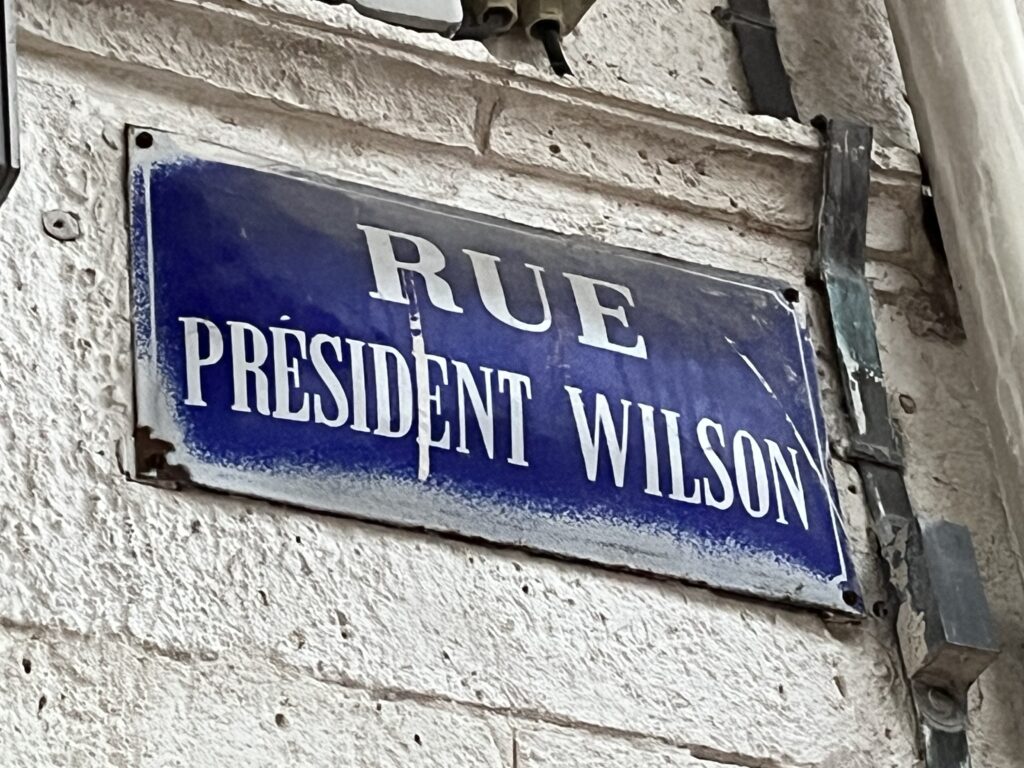
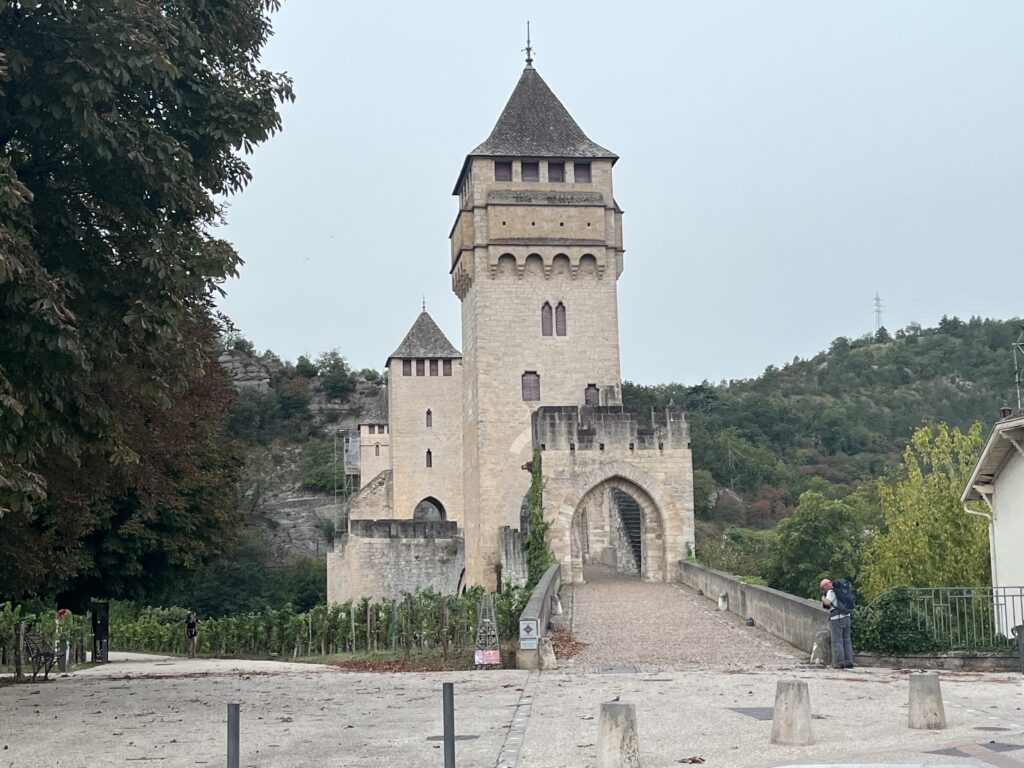
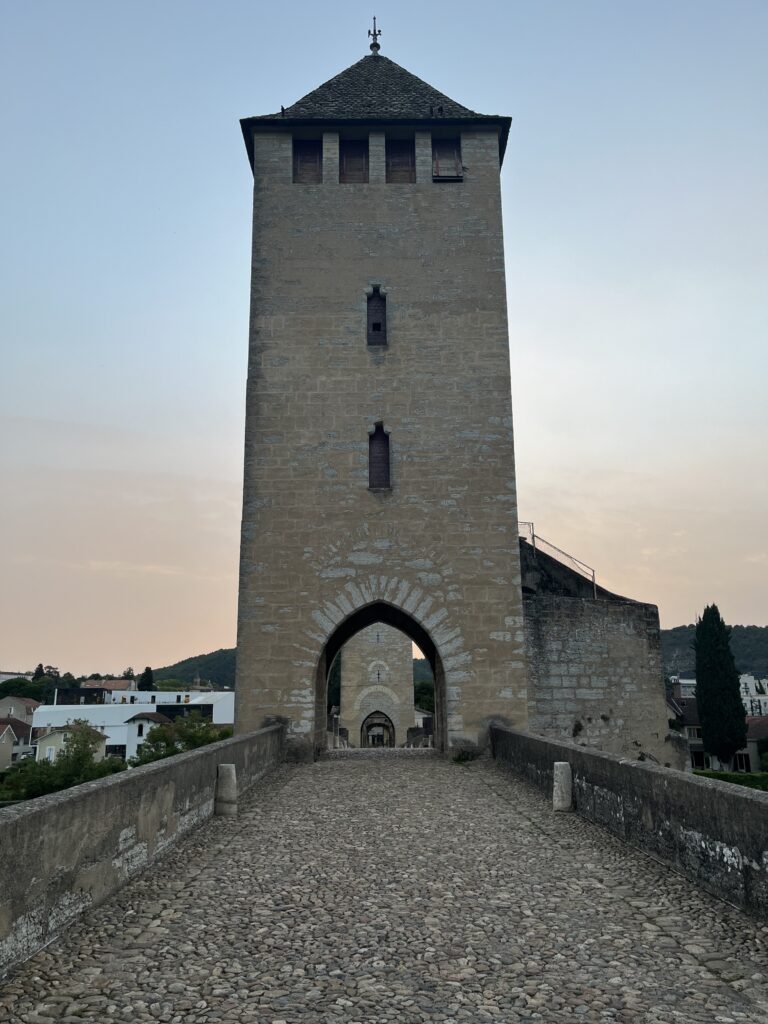
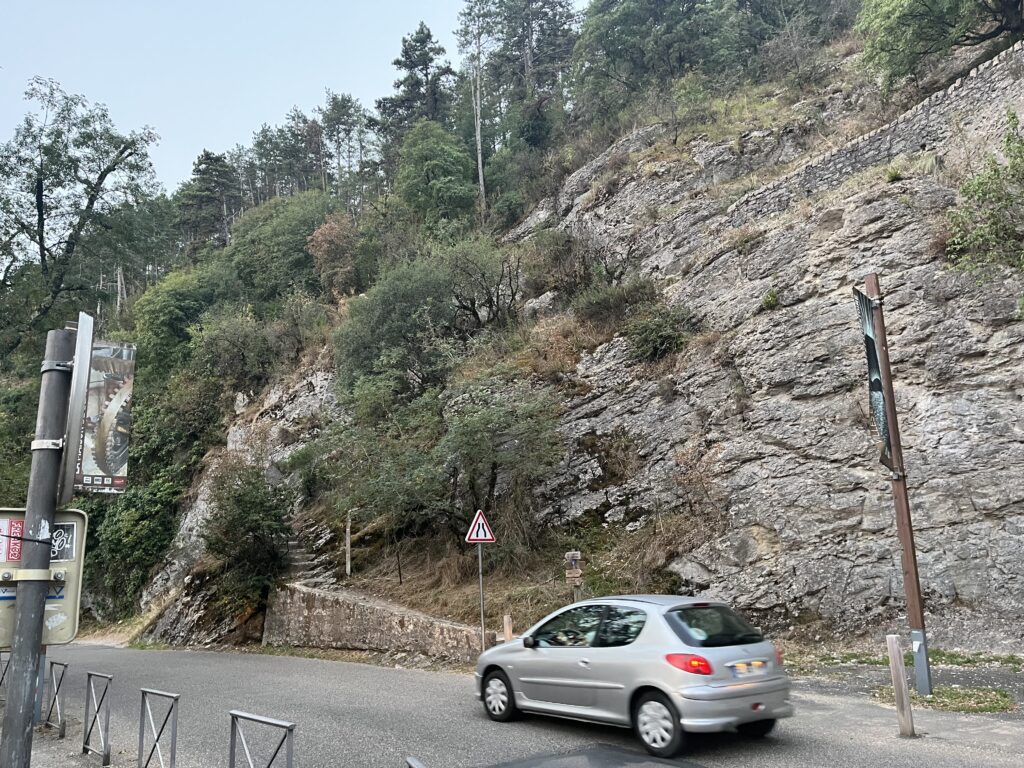
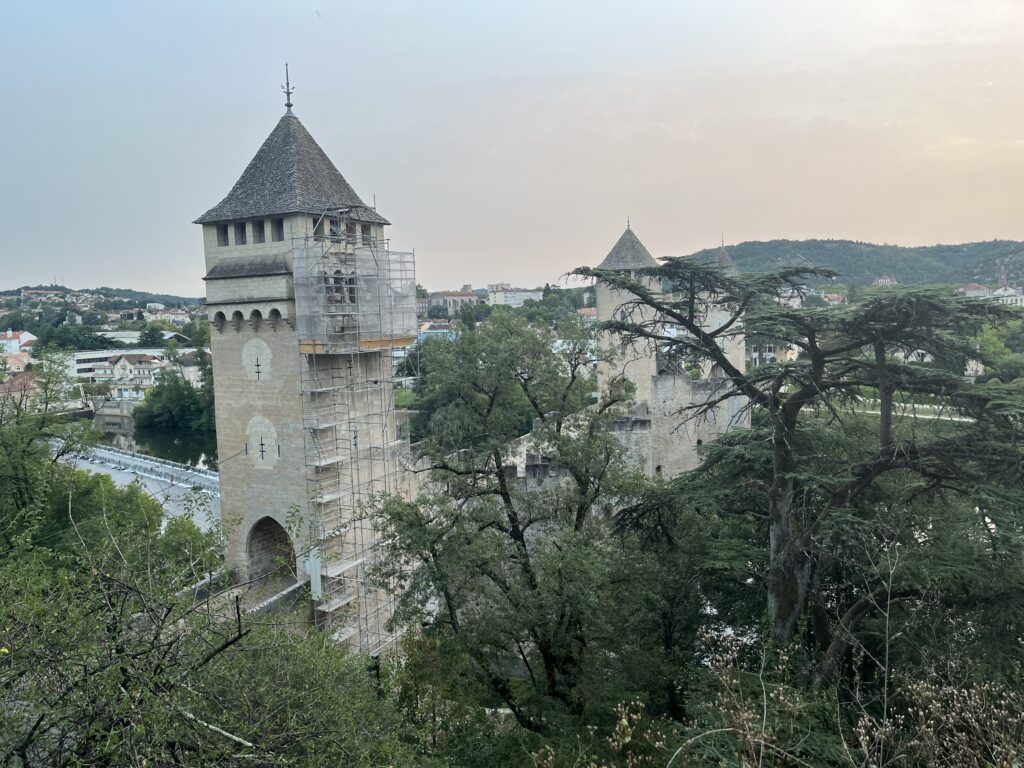
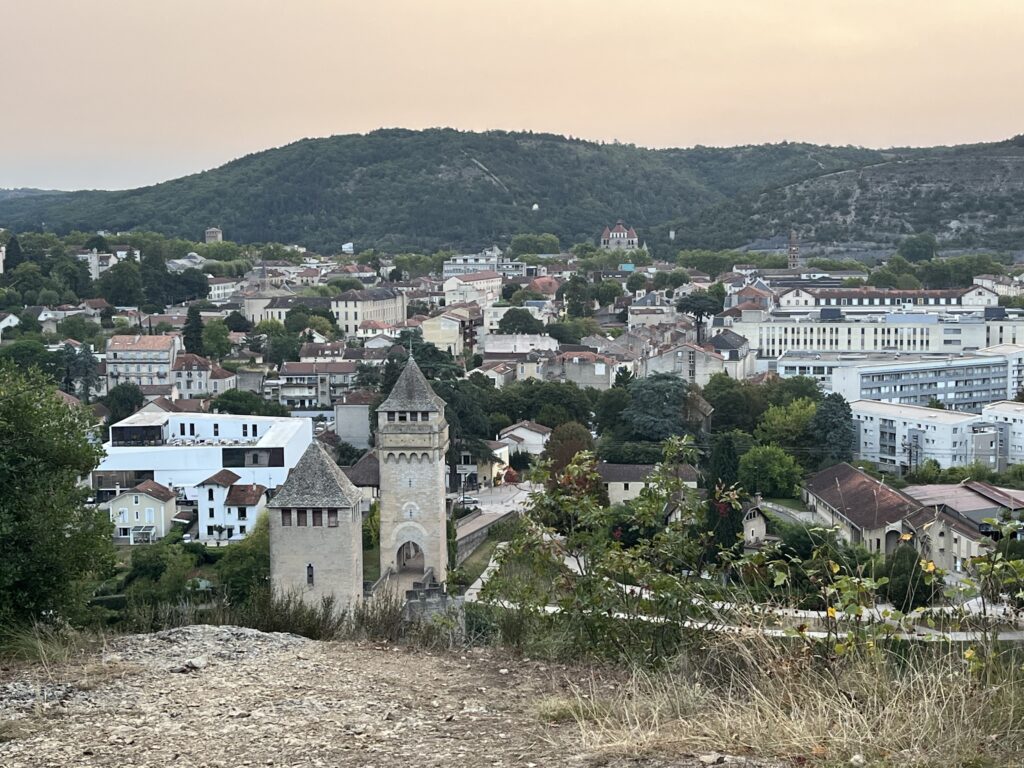
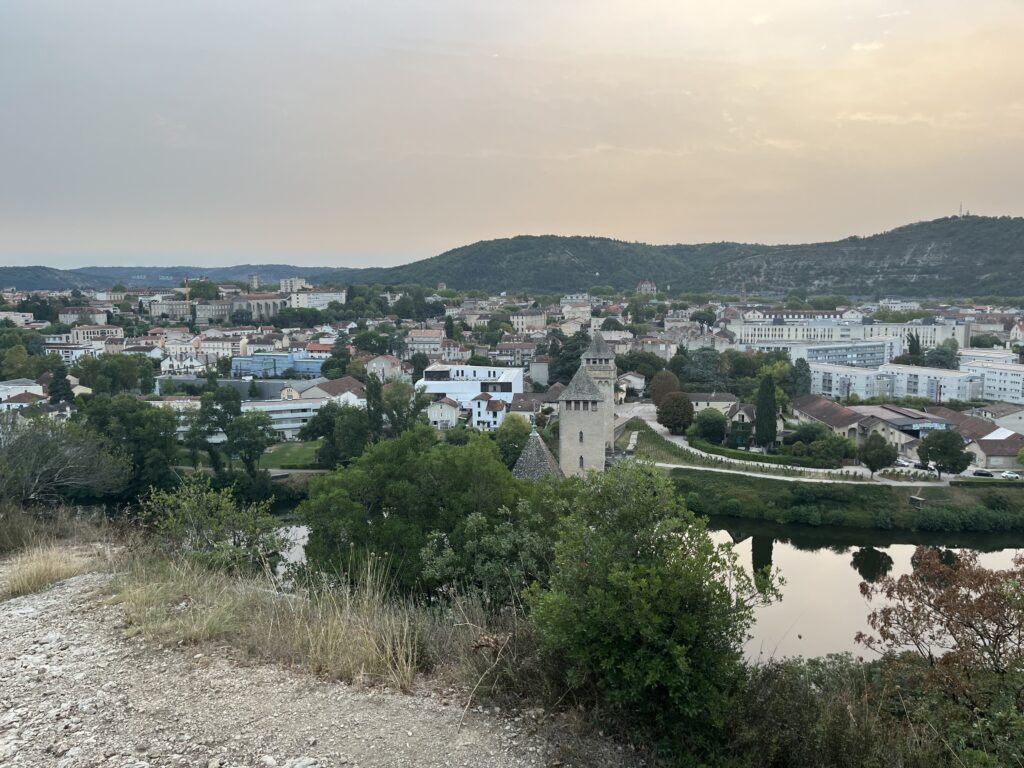
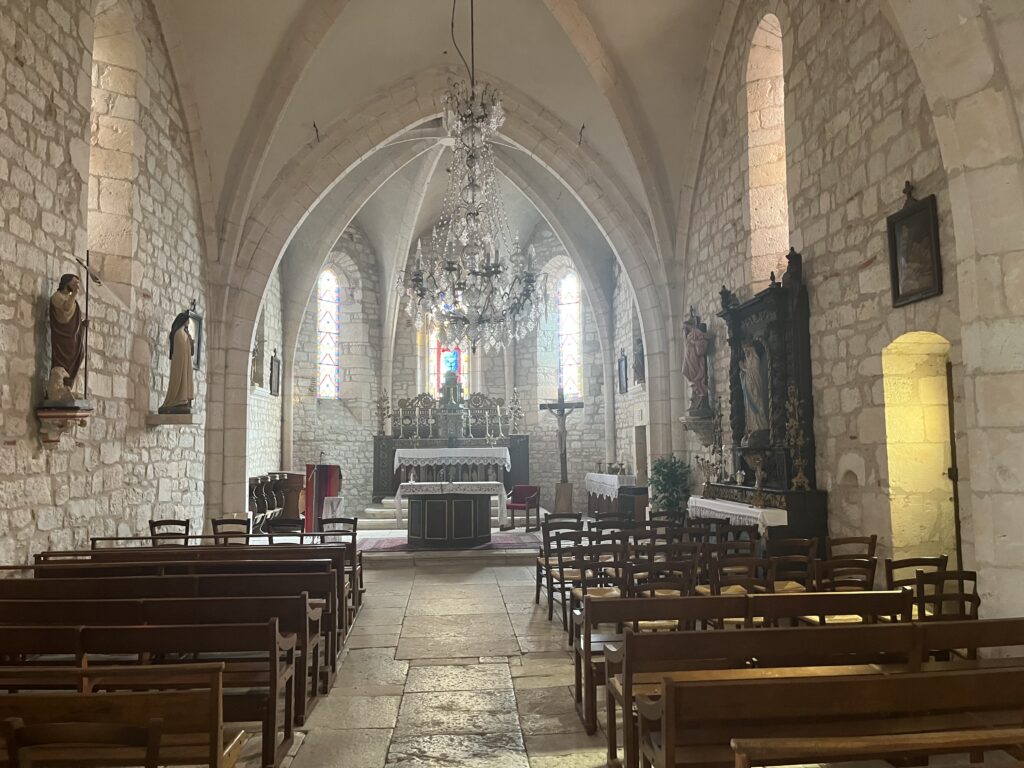
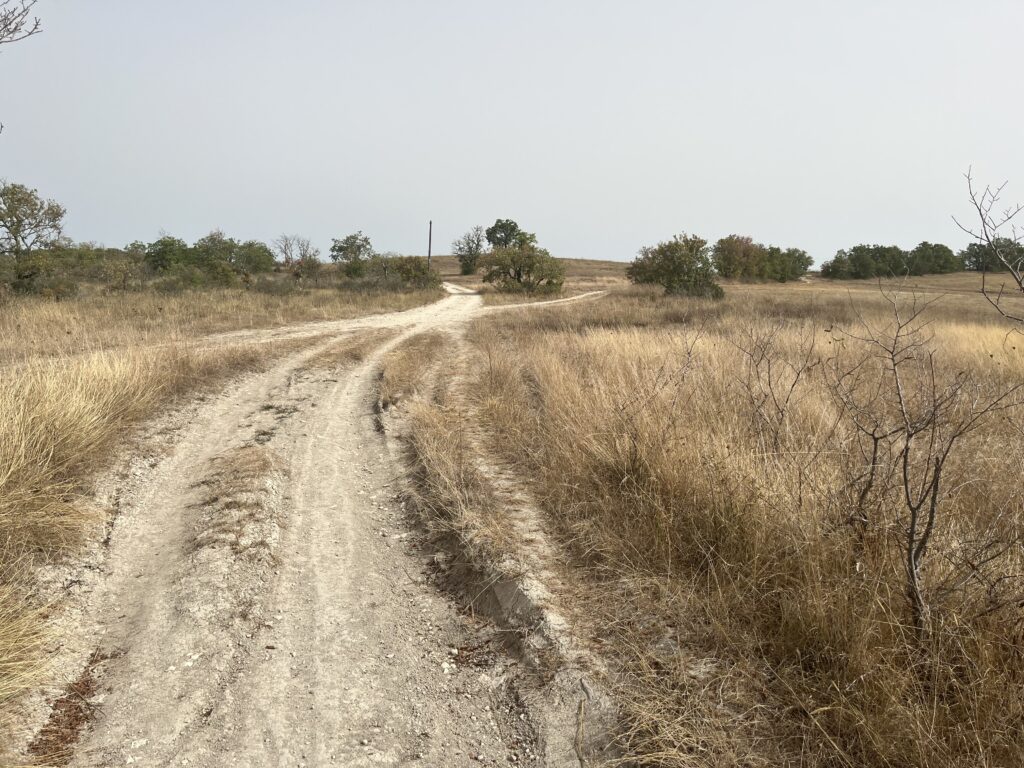
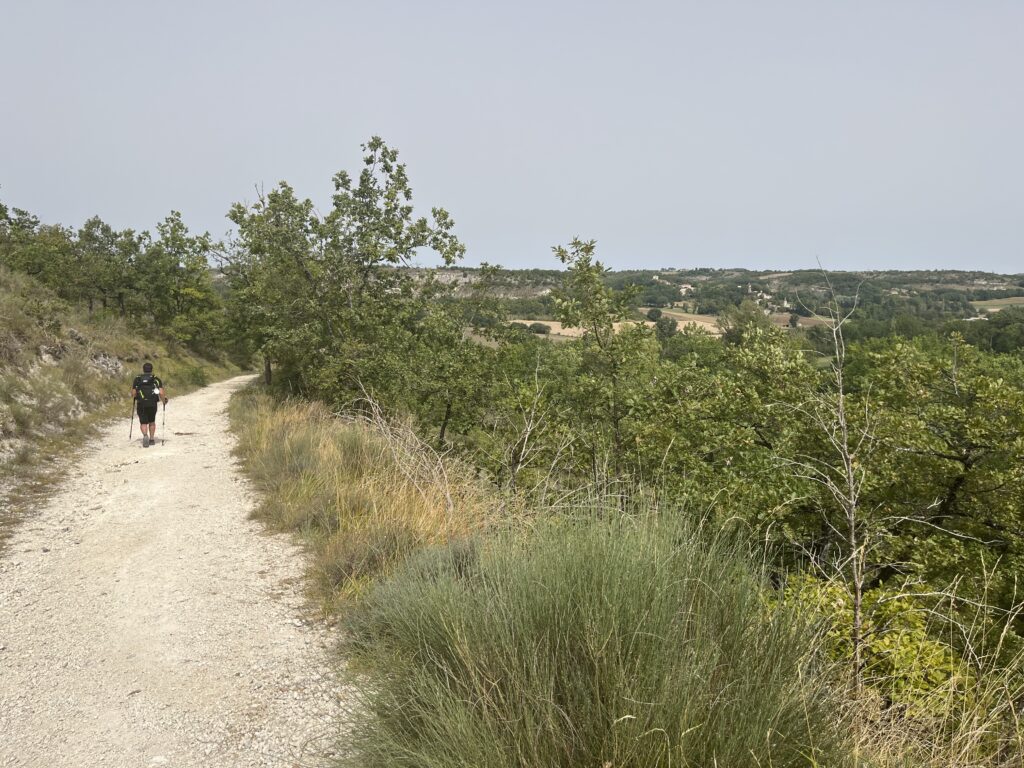
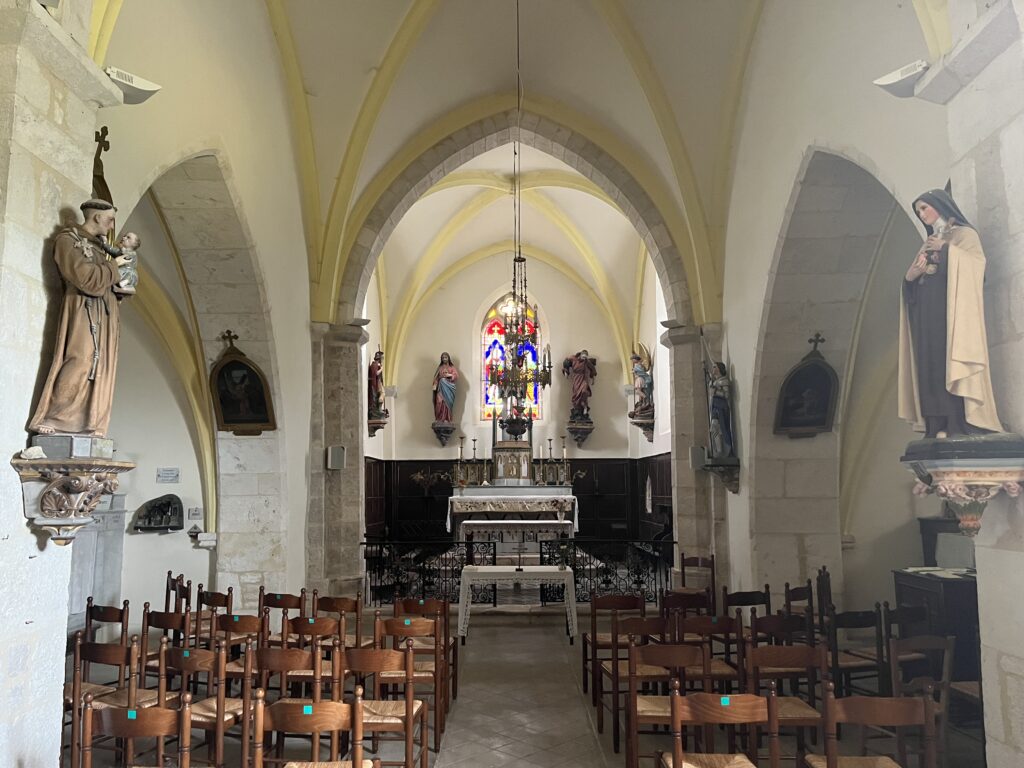
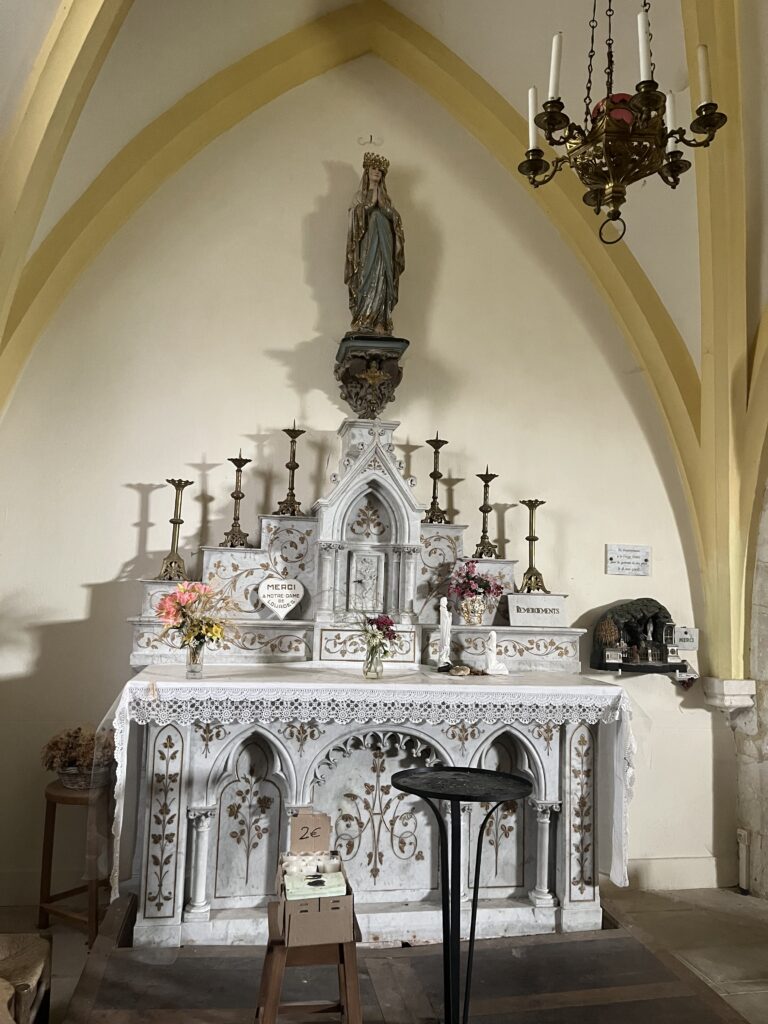
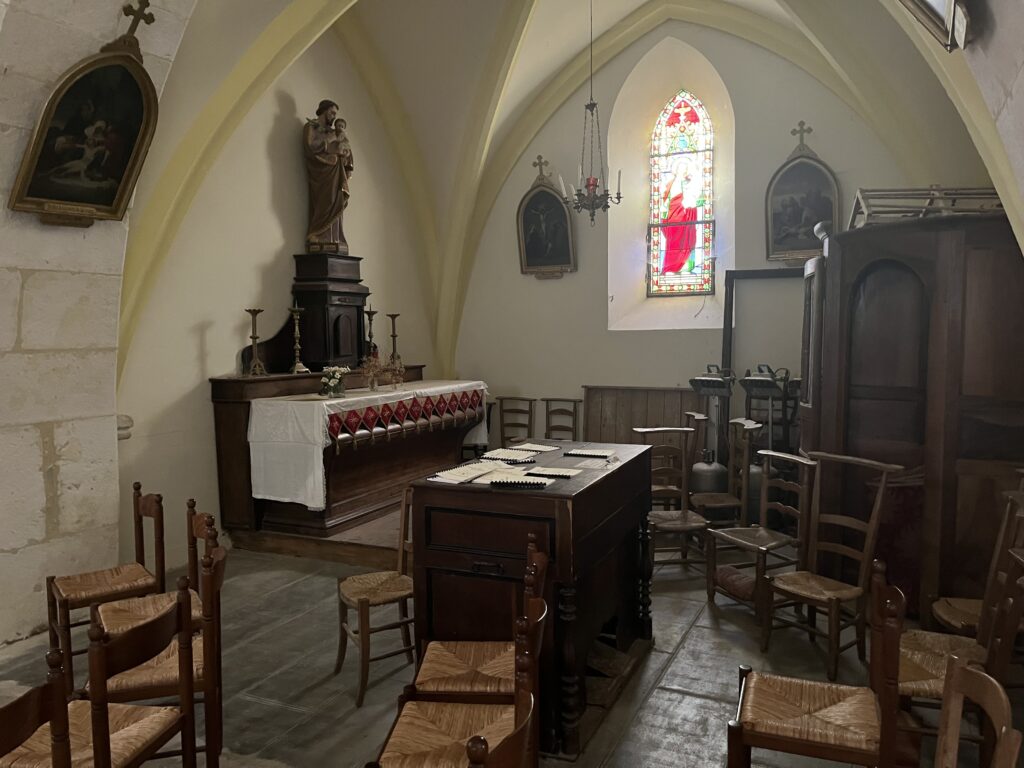
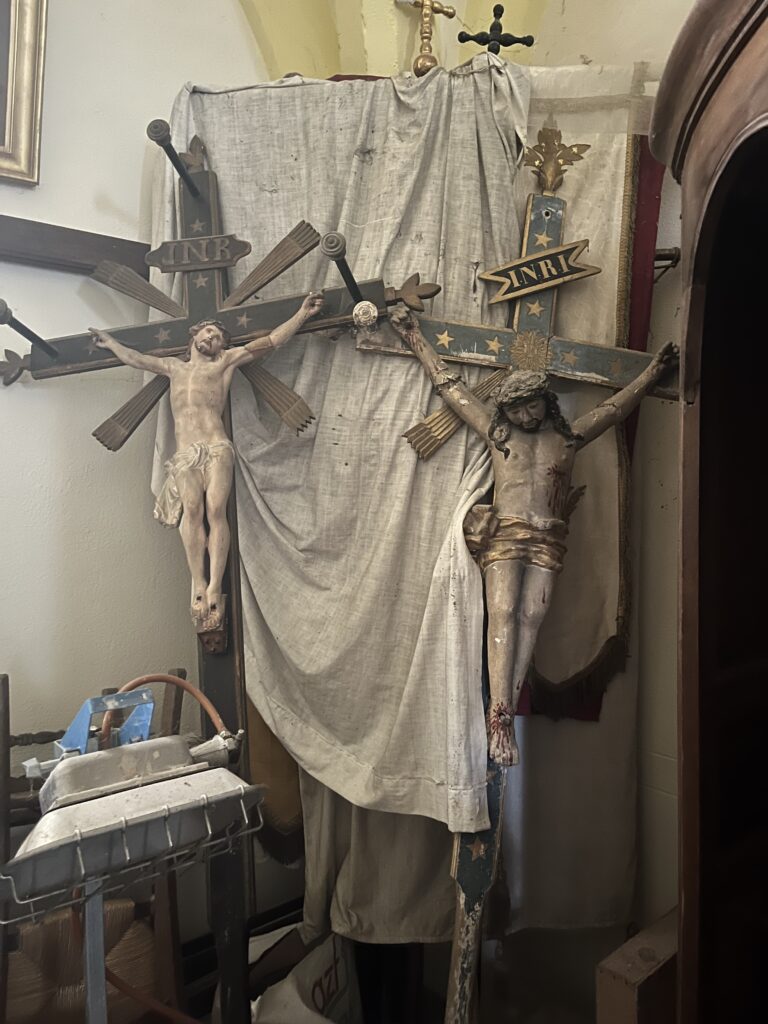

Re: Labastides walls. The walls to most of the fortified villages and indeed some of the larger towns were destroyed during the Wars of Religion at the end of the 16th century, so that it would be harder to withstand the King’s forces.
Ah! That would make sense.
I’m slightly worried about the climb out of Cahors. Is there an alternative route?
Not to my knowledge – unfortunately, my guidebook never made it home from France, or I’d look in there.